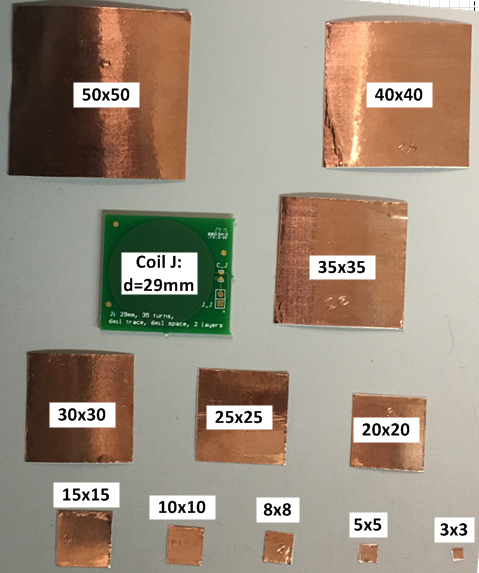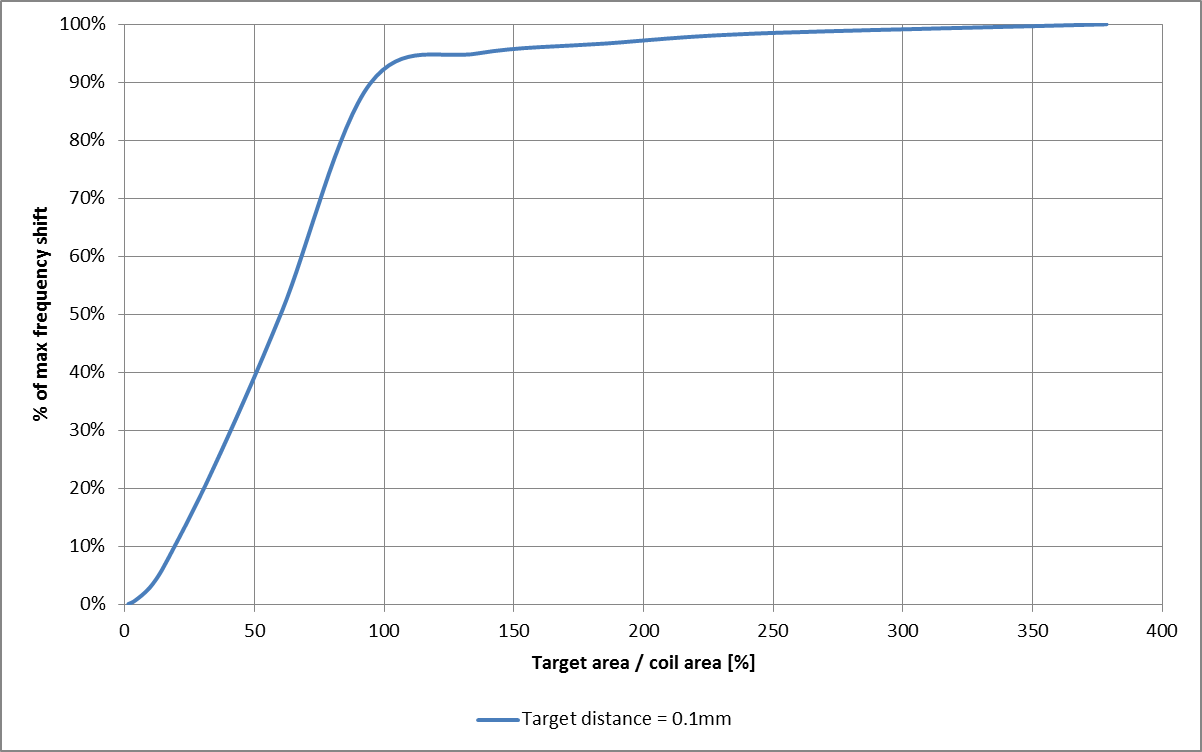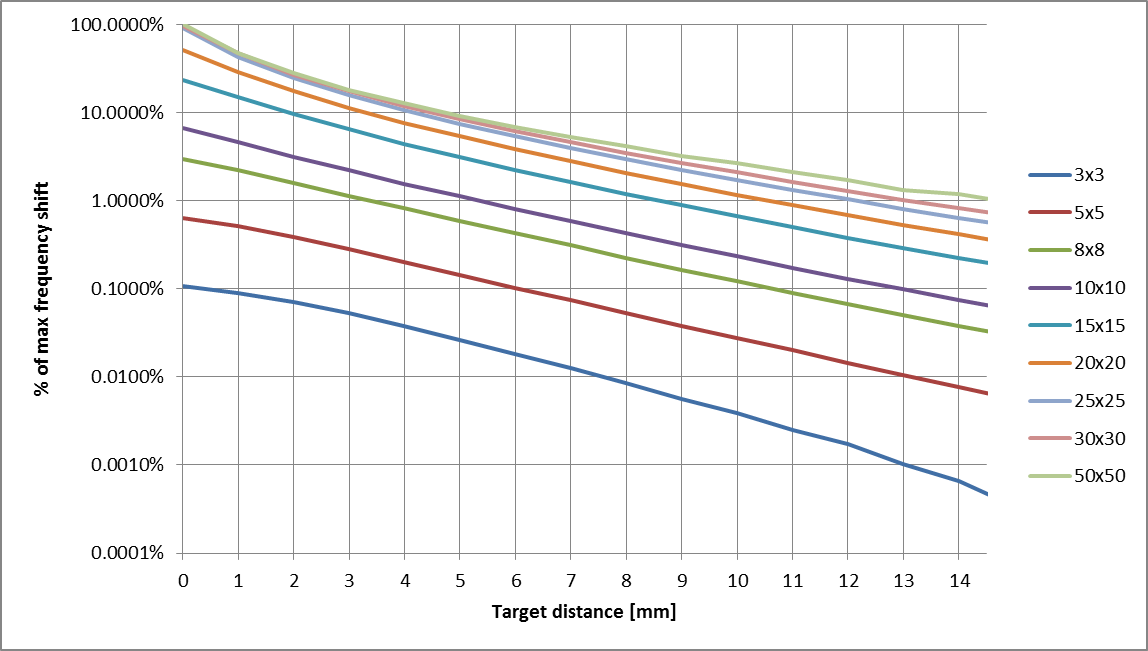SSZTBX4 November 2015 LDC0851 , LDC1101 , LDC1312 , LDC1314 , LDC1612 , LDC1614 , LDC2112 , LDC2114 , LDC3114 , LDC3114-Q1
In previous posts, we have been talking a lot about how sensor size affects sensing range. Using coils with large diameters increases the inductive-sensing range; however, target size also has an impact. Sensing range decreases when the target is smaller than the coil. In this post, I’ll investigate the extent of the relationship between target size and sensing range.
Using the LDC1612, I collected data with a 29mm coil diameter and various target sizes of copper tape, as shown in Figure 1.
 Figure 1 Conductive Targets Made from
Copper Tape (All Sizes in Millimeters)
Figure 1 Conductive Targets Made from
Copper Tape (All Sizes in Millimeters)The coil is “coil J” from the reference coil board evaluation module (EVM). The 29mm coil diameter represents a sensing area of 660.5mm2. Table 1 shows the target dimensions.
| Target dimensions (mm) | Target area (mm2) | Target area/coil area (%) |
| 3 x 3 | 9 | 1.4 |
| 5 x 5 | 25 | 3.8 |
| 8 x 8 | 64 | 9.7 |
| 10 x 10 | 100 | 15.1 |
| 15 x 15 | 225 | 34.1 |
| 20 x 20 | 400 | 60.6 |
| 25 x 25 | 625 | 94.6 |
| 30 x 30 | 900 | 136.3 |
| 35 x 35 | 1,225 | 185.5 |
| 40 x 40 | 1,600 | 242.2 |
| 50 x 50 | 2,500 | 378.5 |
I moved the target from 0.1mm to 14.5mm to represent a travel distance of half the coil diameter and recorded the LDC1612 output codes. For comparison, each response is normalized relative to the maximum code change of a 50mm-by-50mm target. Figure 2 shows that targets larger than the coil diameter have diminishing benefits in sensitivity.
 Figure 2 Increasing Target Size Has
Diminishing Benefits beyond Coil Size
Figure 2 Increasing Target Size Has
Diminishing Benefits beyond Coil SizeFigure 3 shows the code change that a given target has, normalized to the maximum code change of the 50-by-50mm target. For example, at a 5mm target distance, a 10-by-10mm target causes a frequency shift of just 1.1%. A 30-by-30mm target achieves the same frequency shift at a 12.5mm target distance.
 Figure 3 Percentage of Maximum
Frequency Shift vs. Target Distance (in Millimeters)
Figure 3 Percentage of Maximum
Frequency Shift vs. Target Distance (in Millimeters)The data collected shows that not all target geometries produce the same response. Using larger targets produces significantly higher sensitivity, which manifests itself either as an increased sensing range or improved system accuracy. It is not beneficial, however, to increase the target diameter significantly past the coil geometries.
While the data was collected using the LDC1612, this same concept applies to our other LDC devices like the LDC1312, LDC1314, LDC1614, LDC0851, LDC1101, LDC2114, LDC2112, and LDC3114-Q1.
Have any questions? Please check out our additional resources below or start a new question on our forum.
Additional Resources
- Check out other blogs about inductive sensors.
- Check out our sensors forum.
- Learn more about TI’s inductive sensors home page.
- See more information on LDC applications in Common Inductive and Capacitive Sensing Applications (Rev. B).
- Design your sensor coil and start your system design in seconds with the Inductive Sensing Design Calculator Tool (Rev. G)